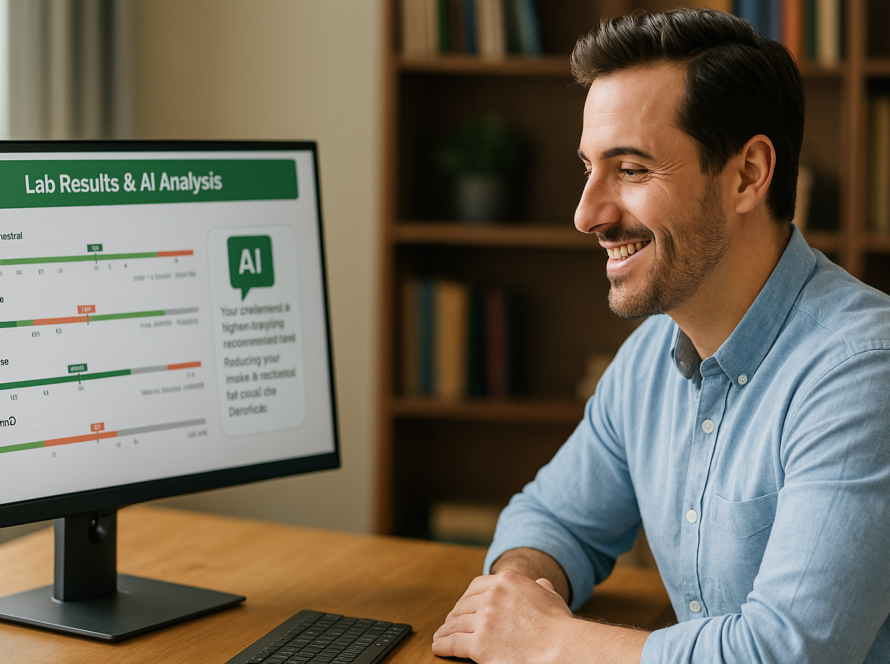Discover how to use AI to sharpen—not replace—your critical thinking. Learn the RFT framework, practical prompts, and mindset shifts that drive better decisions.
Personal Turning Point: The Day I realized I was Thinking on Autopilot
Evenings are when I build my AI-focused business—after a full day of leadership, meetings, and life. That means time is tight, and decisions often need to be quick. A few months in, I hit a wall. I was juggling new client conversations, writing copy, and mapping out our product strategy. My calendar was full, but something felt… flat. I found myself offering the same answers on repeat, reacting out of habit instead of intention.
One evening, I sat down and asked our own AI assistant a question I hadn’t asked myself: “What am I not seeing here?” I prompted it to critique my plan, to show me the angles I was ignoring.
And there it was. Not a perfect answer, but a better question. It made me pause, reassess, and dig deeper.
That moment reminded me why I started this work in the first place—not to build faster answers, but to create better thinking.
That’s when I realized: AI doesn’t need to be flashy to be powerful. When used right, it makes you a more disciplined, more curious, more human thinker.
The Urgency of Now: Why This Conversation Matters in 2025
Every healthcare leader, every business owner, every team lead is being asked to do more with less. More complexity. Less time. More data. Less clarity.
And the risk isn’t burnout. It’s mental autopilot.
That’s why I started using AI not as a replacement, but as a thinking partner. And the difference was immediate.
What began as a side project—an idea I only had time to build in the evenings—soon became a lens I used everywhere. In meetings, in strategy docs, in one-on-one coaching calls with my clients. Not because AI gave me perfect answers. But because it helped me frame better questions.
As author and professor Gary Klein once said, “Insight doesn’t come from just processing information. It comes from questioning it.” AI is the catalyst, not the creator.
My Framework for Better Thinking: How I Use the RFT Method with AI
When I’m moving fast, I default to easy questions. That’s when my thinking slips into autopilot. AI won’t interrupt that rhythm unless I ask it to. And it won’t make me sharper unless I structure the conversation with intention.
So I started using a mental framework that I now teach to clients too. It’s called RFT—Role, Focus, and Tension.
It’s simple, but it changes everything.
🧠 RFT Prompt Framework Role – Who should the AI be? A strategist? A skeptic? A mentor? Focus – What is the core decision, dilemma, or blind spot you’re facing? Tension – Where is the pushback? What’s the strongest counterargument or hidden flaw?
This approach is grounded in principles from Socratic questioning and critical thinking theory, which emphasize the importance of structured inquiry and adversarial reasoning to deepen insight (Paul & Elder, n.d.).
1. Role
The first thing I do is set the lens. I tell AI who it needs to be in that moment. Not a chatbot. A mentor, a strategist, a skeptic. It changes how it answers.
“You’re a startup investor who’s seen 100 AI pitches.” “You’re a skeptical buyer who doesn’t trust this feature yet.”
2. Focus
I don’t explain everything. I zero in on the friction. What part feels unclear? What decision feels stuck? That’s the opening.
“I can’t tell if I’m solving a real problem or making noise.” “This pitch works in my head but doesn’t land in the room.”
3. Tension
This is where it gets useful. I invite the AI to challenge me. I ask it to poke holes, highlight risks, and uncover blind spots.
“What would a critic say?” “Where could this completely backfire?”
When I use prompts like this, the answers I get don’t just help me act faster. They help me think deeper. That’s the shift.

Put Into Practice: AI Prompts Built with RFT
- Startup Direction Role: You are a startup strategist who has launched multiple SaaS platforms. Focus: I’m building a tool to automate small business lead management. What early user behavior patterns should I be tracking to improve onboarding? Tension: Where might this model fail in a crowded market.
- Time Efficiency Role: You are a productivity coach for solo founders. Focus: I work full-time and build my AI business at night. I have 12 hours a week. What’s the highest-leverage use of that time? Tension: What distractions am I underestimating that could derail this?
- Marketing Strategy Role: You are a B2B growth consultant for AI startups. Focus: I’m targeting non-tech small business owners. What’s the simplest way to communicate how AI helps them reclaim time? Tension: What assumptions am I making about what they actually care about?
- Team Decision-Making Role: You are a leadership coach working with small healthcare teams. Focus: I want to introduce an AI note summarization tool to the team. What’s the best way to frame this so it reduces resistance? Tension: What concerns might they have that I’m not seeing?
Use the RFT method. Ask one question a day. The discipline is what builds the edge.
Your Next Step: Build the Muscle of Better Thinking
Don’t bookmark this for later. Use it now.
Pick one friction point from your week. Open a new doc, and apply RFT. Ask the better question.
Share what you find. Tag someone who thinks deeply. Or forward this to a leader who’s navigating decisions alone.
AI won’t replace your critical thinking. But it can help you reclaim it.
📚 References
Gerlich, M. (2025). AI tools in society: Impacts on cognitive offloading and the future of critical thinking. Societies, 15(1), Article 6. https://doi.org/10.3390/soc15010006
Kahneman, D., & Klein, G. (2009). Conditions for intuitive expertise: A failure to disagree. American Psychologist, 64(6), 515–526. https://doi.org/10.1037/a0016755
Paul, R., & Elder, L. (n.d.). The miniature guide to critical thinking: Concepts and tools. The Foundation for Critical Thinking.https://www.criticalthinking.org/files/Concepts_Tools.pdf
PricewaterhouseCoopers. (2025). 2025 AI business predictions. PwC. https://www.pwc.com/us/en/tech-effect/ai-analytics/ai-predictions.html



1 Comment
Comments are closed.